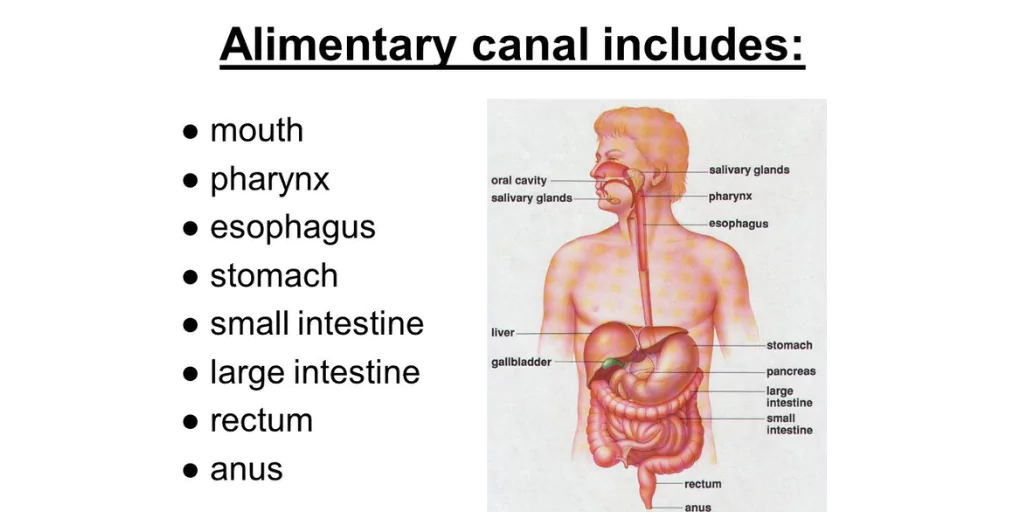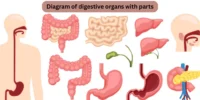The Alimentary Canal of Human is a remarkable structure that forms the foundation of the digestive process. Extending from the mouth to the anus, it systematically breaks down the food we eat, ensuring the absorption of nutrients and the removal of waste from the body.
What is the Alimentary Canal?
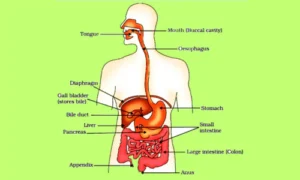
The alimentary canal, commonly referred to as the digestive system, is a continuous, hollow tube in the human body that begins in the mouth and terminates in the anus. It is approximately 9 meters (30 feet) long in an adult and is responsible for food intake, digestion, absorption, and excretion.
Main Components of the Human Alimentary Canal
Let’s look at the primary components of the alimentary canal and their distinct functions:
1. Mouth
Structure: Includes lips, tongue, teeth, and salivary glands.
Function: The entry point for food; mechanical breakdown by chewing and chemical digestion by saliva.
2. Pharynx
Structure: A muscular funnel connecting the mouth to the esophagus.
Function: Pathway for the movement of food from the mouth to the esophagus.
3. Esophagus
Structure: A long, muscular tube (~25 cm).
Function: Transports food to the stomach using wave-like muscle contractions called peristalsis.
4. Stomach
Structure: A J-shaped muscular sac.
Function: Mixes food with gastric juices for chemical digestion; converts it into a semi-liquid form called chyme.
5. Small Intestine
Structure: Divided into three parts – duodenum, jejunum, and ileum.
Function: Major site for the digestion and absorption of nutrients into the bloodstream.
6. Large Intestine
Structure: Includes cecum, colon, rectum, and anus.
Function: Absorbs water and minerals; forms and stores faeces.
7. Anus
Structure: The terminal opening of the alimentary canal.
Function: Removes undigested and unwanted waste from the body.
Supporting Digestive Organs (Not Part of the Canal)
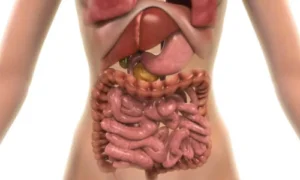
While not directly part of the canal, these accessory organs play a vital role in digestion:
- Salivary glands: Secrete saliva to help break down food.
- Liver: Produces bile to digest fats.
- Gallbladder: Stores and releases bile.
- Pancreas: Releases enzymes that aid in digestion in the small intestine.
Functions of the Alimentary Canal
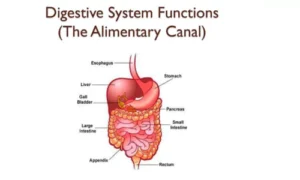
The alimentary canal performs several key functions:
- Ingestion – Taking food into the mouth.
- Digestion – Breaking down food both mechanically and chemically.
- Absorption – Transporting nutrients into the blood for energy and growth.
- Assimilation – Using absorbed nutrients in body cells.
- Egestion – Removing indigestible substances as waste (faeces).
Interesting Facts
- The small intestine is longer than the large intestine but narrower.
- The stomach’s acid is strong enough to dissolve metal, but your stomach is protected by a mucus lining.
- Peristalsis in the esophagus is so strong that you could swallow even upside down!
Conclusion
The human alimentary canal is a fascinating and necessary component of our bodies that keeps us active, healthy, and functional. Understanding its structure and function not only broadens our biological knowledge but also enables us to make better lifestyle and food decisions.


